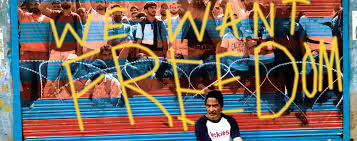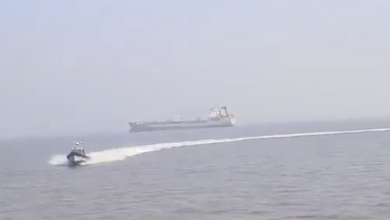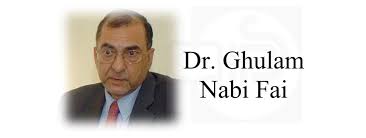 Kashmir, under Indian occupation, has largely slipped from the global agenda since Narendra Modi, India’s hardline Hindu nationalist leader, was elevated to the status of a Western ally. Despite the substantial presence of Indian forces and severe restrictions on movement and communication, New Delhi continues to depict the resistance movement in the valley as terrorism, using this narrative to justify an even tighter grip on the region.
Kashmir, under Indian occupation, has largely slipped from the global agenda since Narendra Modi, India’s hardline Hindu nationalist leader, was elevated to the status of a Western ally. Despite the substantial presence of Indian forces and severe restrictions on movement and communication, New Delhi continues to depict the resistance movement in the valley as terrorism, using this narrative to justify an even tighter grip on the region.
This year alone, India has claimed at least five attacks, attributing them to what it describes as a new wave of ‘insurgency’ in the occupied territory, which Modi is determined to fully integrate into the country, against the will of its people.
According to details released by Indian authorities to Western media outlets, so far, a total of 16 Indian soldiers and policemen have been killed in alleged attacks. The most recent incident occurred on June 9, the day Modi was sworn in for his third term as prime minister, when a bus carrying Hindu pilgrims was reportedly ambushed in the Reasi area by suspected militants.
Earlier this month, the Indian government’s claims were echoed in a Guardian report, citing experts in New Delhi who warned of militants armed with advanced technology, including drones. The article framed the Reasi ambush as part of a surge in attacks, which has led to nearly 200 Indian security personnel being killed.
However, critics point out that the report glosses over the plight of Kashmiris, many of whom have been killed or stripped of their rights, particularly since 2019, when India downgraded the status of the Muslim-majority Himalayan territory, which, according to Dr Gregory Stanton, the founding president of Genocide Watch, faces an extreme case of persecution by the Modi administration that could potentially escalate into genocide.Taking what experts describe as a page from Benjamin Netanyahu’s playbook against Hamas, Modi and his operatives in Indian Illegally Occupied Jammu and Kashmir (IIOJK) now appear to be attempting to lay the groundwork for a Gaza-style operation in the territory.
“Knowing that Benjamin Netanyahu is getting away with genocide in Gaza, Modi seems emboldened and may even be motivated to use the insurgency pretext to launch a full-scale military operation inside the occupied territory,” cautioned Dr Talat Wizarat, former chairperson of the Department of International Relations, University of Karachi.
Interestingly, the Guardian report, citing claims from Indian sources, suggests that Hindu-majority areas in the occupied territory now face a heightened risk of militancy. However, experts contend that the report overlooks the Modi administration’s efforts to alter the demographic landscape of the Muslim-majority Himalayan region through domicile rights for Indian citizens, which have facilitated the settlement of Hindus in the area and will ultimately dilute the Muslim claim.
“Sounds very similar to Netanyahu’s strategy: occupy the territory and then build a case against those you’re oppressing. Any human being who is denied dignity, who is denied freedom, and whose territory is taken from them will do what the Kashmiris are doing,” said Wizarat.
None of this is a surprise, she added. Last October, just hours after Hamas launched its assault on Israel, India’s prime minister was among the first world leaders to respond. In a strongly worded statement, Narendra Modi condemned the “terrorist attacks” and declared that India “stands in solidarity with Israel at this difficult hour.” Shortly thereafter, the Indian foreign minister retweeted the comment. Another minister from Modi’s ruling Bharatiya Janata Party (BJP) cautioned in a tweet that India “may face the situation that Israel is confronting today if we don’t stand up against politically motivated radicalism.”
Wizarat noted that the messages from the Indian government subtly hinted at IIOJK and its struggle for freedom.
Narrative vs reality
In February 2019, 40 Indian paramilitary soldiers were killed in an attack in the Pulwama district of the occupied Himalayan region. Shortly after the incident, New Delhi pointed the finger at Islamabad, accusing it of orchestrating the bombing, which brought the two nuclear rivals to the brink of another conflict.However, in 2023, Satya Pal Malik, who was the governor of IIOJK at the time, revealed in an interview with India’s The Wire that he “realised that all the onus of the attack was placed on Pakistan by the Modi administration” to gain electoral advantage. During the explosive interview with Karan Thapar, Malik remarked, “Narendra Modi is a very ill-informed person.” Perhaps not entirely. That year, Modi had frequently referenced the Pulwama attack to galvanise voters in the general elections, openly blaming Pakistan.
The message struck a chord with his Hindu voter base, helping to propel Modi to a resounding victory and returning the BJP to power with a commanding majority in parliament. That same year, IIOJK was stripped of its semi-autonomous status. According to Human Rights Watch, since then, the occupied territory has experienced its most severe crackdown by New Delhi’s forces. In 2023, the digital rights group Access Now reported 187 Internet shutdowns worldwide, with India leading the list at 84 — 49 of them in IIOJK. Since the revocation of its special status, the region has experienced an unprecedented clampdown, with rights groups warning that new laws and policies are designed to marginalise and oppress Muslims in IIOJK.
In these circumstances, Wizarat, who described IIOJK as an “open-air prison,” argued that it’s nearly impossible for an insurgency to make headway. “The facts don’t support India’s claims of a new wave of insurgency. There is heavy presence of Indian troops in the territory. Communication and movement have been tightly restricted since 2019. How could an insurgent movement acquire modern weapons in such an environment?”
According to Wizarat, the Indian leader aims to kill two birds with one stone. “Historically, reports of unrest in both India and IIOJK are tied to Muslim insurgents, allegedly supported by Pakistan.” Modi, she added, has consistently sought to brand IIOJK’s legitimate struggle for freedom as terrorism, while portraying Pakistan as a state sponsor of that terrorism.
Wizarat believes the Indian Prime Minister is effectively building a narrative that casts Kashmiris as Muslim terrorists opposed to peace. “Given the number of reports from this year alone, it appears that India’s machinery is accelerating its efforts to construct a negative image of the people of IIOJK, likely to legitimise any future aggressive actions against them.”
The UN, she added, must investigate such claims, before they are considered credible.
Commenting on India’s narrative that frames IIOJK’s struggle for freedom as terrorism, Pir Ali Raza Bukhari, a religious scholar and former member of the Azad Jammu and Kashmir (AJK) Legislative Assembly, said: “The Indian government has persistently tried to portray the legitimate struggle of the Kashmiri people for self-determination as a terrorist movement. By accusing freedom fighters of using modern weaponry like drones, they seek to lend credibility to this false narrative.”
Bukhari, who holds permanent representative status at the United Nations, emphasised that the Kashmiri struggle is anchored in international law and the right to self-determination, a principle recognised by the UN.
“This movement is fundamentally peaceful, driven by decades of oppression and the denial of basic human rights to the people of IIOJK. Labelling freedom fighters as terrorists is a well-worn tactic used by occupying powers to delegitimise genuine struggles for freedom,” he added.
When asked about accusations of Kashmiri fighters employing advanced weaponry, Bukhari said, “They serve to divert attention from India’s ongoing human rights violations in the region. The narrative India is pushing aims to paint members of the Kashmiri freedom movement as aggressors, while in reality, the Kashmiri people have endured decades of brutal occupation and state-sponsored violence.”
Bukhari further highlighted the oppressive conditions in IIOJK, describing it as one of the most militarised zones in the world. “With nearly a million troops stationed there — often outnumbering the local population — Kashmir is under extreme surveillance and control. Frequent restrictions on communication, including Internet and phone services, isolate the region from the outside world,” he said.
Sophisticated weaponry
According to the Guardian, Indian military sources allege that suspected militants in IIOJK are using drones and other automatic weapons. However, given the heavy presence of Indian forces and the state’s proven capability to control movement and communication at will, as seen in past crackdowns, the credibility of these claims is questionable.
A senior defence analyst underscored that the presence of extensive Indian military apparatus casts doubt on the likelihood of militants acquiring advanced weaponry unnoticed. He noted that after the downgrade of IIOJK’s status, the Modi administration effectively created a situation reminiscent of the Stone Age in the valley: “There was an 18-month-long internet and phone shutdown that began in the Indian-occupied Himalayan region in 2019, which the Indian government extended and employed at will.”
This shutdown continued until February 5, 2021, when 4G mobile data services were reinstated, although slow-speed Internet had been restored a year earlier with limited access. According to Statista, a global data aggregation platform, there have been more than 433 Internet outages in IIOJK over the past decade, and shutdowns have become more frequent in recent years in the conflict-ridden region.
“Under such heavy control, how does any militant organisation acquire sophisticated weaponry? We are talking about unmanned aerial vehicles, or drones, not needles,” the analyst remarked.
Modi’s Kashmir Strategy
Experts monitoring Modi’s Hindu-nationalist network and his unprecedented ascent in Indian politics have consistently noted that the Indian prime minister secures political gains by projecting a negative image of Muslims nationwide, particularly by labelling IIOJK’s struggle for freedom as a terrorist movement backed by Pakistan. His ultra-Hindu nationalist supporters readily embrace this narrative. Modi’s rhetoric has escalated recently. Since October 7, experts note, he has increasingly amplified the threat of terrorism in IIOJK, drawing parallels between the freedom movement and terrorism, much like Benjamin Netanyahu’s approach to Hamas.
“There are clear parallels between Prime Minister Modi’s policies in Kashmir and those of Netanyahu in Gaza. Both leaders have attempted to frame resistance movements as acts of terrorism to justify extreme military actions,” explained Raza Bukhari.
By labelling the Kashmiri freedom movement as terrorism, he said, Modi seeks to create a pretext for even more aggressive military operations in the region, similar to the military campaigns witnessed in Gaza. “Just as Israel has used accusations of terrorism to justify its actions against the Palestinian people, the Indian government is trying to do the same in Kashmir,” he added.
When asked to comment on Modi’s strategy, Wizarat remarked, “The fact that Netanyahu has been able to defy all international norms and bulldoze Gaza allows Modi to believe he can do the same in Kashmir and get away with it.” Muslim nations, including Pakistan.








